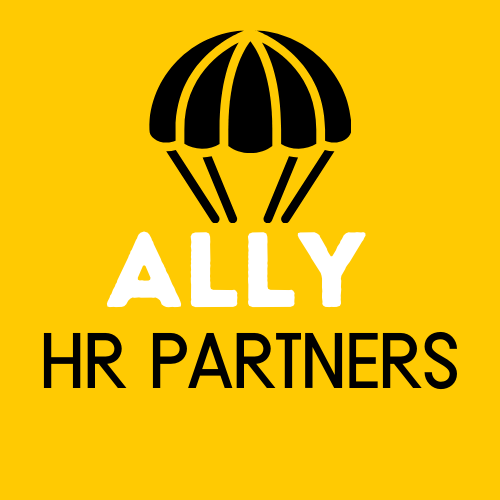Leave Best Practices for All Employers
Employee leave usage is on the rise following the return-to-work after COVID. The number of leave options available to employees is also at an all-time high- leaves employers are required to provide. Administering these various leaves and staying compliant with their requirements, while also reducing their impact on your business, can be tricky to do.
As you face this growing factor in your business, we’ve put together multiple best practice tips to help you assemble a leave administration plan that will keep you out of trouble and make it easiest for you to manage these leaves within your business.
1. Know what you’re obligated to provide.
The patchwork of leave requirements for employers continues to grow each year, in some cases varying at the county and city level. In NYS, employees now can take multiple kinds of leave for their own medical conditions, to care for family members, parental bonding, domestic violence circumstances, and more. Employers need to have at least a basic understanding of all the options available because they are required to offer and provide these leaves in cases where employees have a need. On top of that, employers are prohibited from taking negative action against an employee when these protections are available. For NYS specifically (not including NYC nuance), we’ve assembled a one-page guide that summarizes various leave types, requirements, etc. for employers. The first step all business owners should take is educating themselves on these requirements so that they are aware of their obligations into the future.
2. Have a set plan to manage and administer the leaves.
Although many leaves have very specific rules about paperwork, timelines, job protections, etc., there are many factors that are not regulated that should be determined and outlined ahead of time. Making decisions and creating set policies around employee leaves is important to allow you to plan for these things, but also to ensure that you are being consistent to avoid potential claims of discrimination, retaliation, or other charges later. Decisions your business should make ahead of time include questions like: who will manage and track leave usage and compliance, will you require employees to overlap multiple leave eligibility periods, will you require the use of earned time off for unpaid portions of leave, can employees earn more time off while on leave, and how will employees pay benefit premiums while they are off? Having a set plan up front to manage and streamline dealing with this administrative nuance will help save you valuable time and sanity, protect you, and likely create a more positive leave experience for everyone involved.
Check out a webinar we did on this subject to get more help on meeting requirements and having a plan.
3. Get the Documentation right.
For each leave type, there are multiple pieces of paperwork you are required to provide and use during the request and approval process. This includes notices of rights and responsibilities of each party, as well as specific application paperwork needed by your carrier to review and approve eligibility. This paperwork very often also has deadlines associated with its disbursement and return. Not understanding these obligations alone can land you in hot water and out of compliance with leave law requirements, and make it much harder to defend claims about improper denial, mismanagement, etc. later.
Aside from what’s required, we also highly recommend formally communicating other details with employees along the way. This includes information on certain Company-specific policy decisions you’ve made like those mentioned above (requirement to pay premiums, time off usage, etc.). This can be in cover letters you send with required paperwork, or can be in less formal emails or other messages you send to staff. Bottom line? Like all things HR, documentation is EVERYTHING, and if something isn’t in writing, it didn’t happen. Sending the required, but also “best practice” paperwork and notices is probably the best advice that can be given about leave administration. That includes tracking proof of receipt- use email receipts or certified mail. Having proof you followed the rules and adequately communicated with employees is key.
4. Don’t retaliate (or even perceive to).
Like most other areas of employment law, most leave laws come with other explicit employee protections that prohibit employers from taking negative action against employees for exercising their leave rights. The most common claims now are centered around the concept of “retaliation”, which occurs when an employer takes a “materially adverse” action against an employee for exercising a protected right. “Materially adverse” action has a loose definition, and the scope of employment-related areas this can occur is vast. Simple examples of things that could lead to claims of retaliation are changing an employee’s schedule after a leave request or return, employees or managers complaining about or ostracizing an employee because they have taken leave, passing over an employee for promotion, or even just snide comments or passive aggressive behavior. The take-away? Don’t treat employees who exercise leave rights differently or allow different treatment by anyone in the business. Timing and perception are huge factors here, so decisions to discipline employees, even for legitimate reasons, after they return from leave should be extremely well-documented and handled with extreme caution. Perception of different treatment because of leave use is enough to result in a claim, and like all-things employment related, you will be required to prove yourself innocent or end up settling or losing the claim.
5. Train your Managers.
As we’ve mentioned many times before, stockpiling this information to a centralized HR office or singular person in your organization is not the best way to protect your business. Vicarious liability is likely one of the most underappreciated threats to any business, and the behavior of your Managers really is what either creates or mitigates much of the employment-related risk for your business. This includes the topic of employee leave. Doing some basic education with you Managers on leave requirements and obligations can help your Managers identify employee situations that need escalation and attention, and also prevent managers from disciplining or taking other negative action too quickly when certain leave obligations, rights, and protections may actually need to come into play. Finally, minimally arming your leadership with facts on the concept of retaliation can help ensure that they are not inadvertently putting you in harm’s way, and can keep their own, and others’ behavior under control to avoid those claims from occurring as well.
For more information about leave obligations, nuance, and best practices, you can watch recent videos and webinars we’ve created on this topic which go even more in depth. Check out this and all resources at AllyHRPartners.com, or reach out with specific questions!


